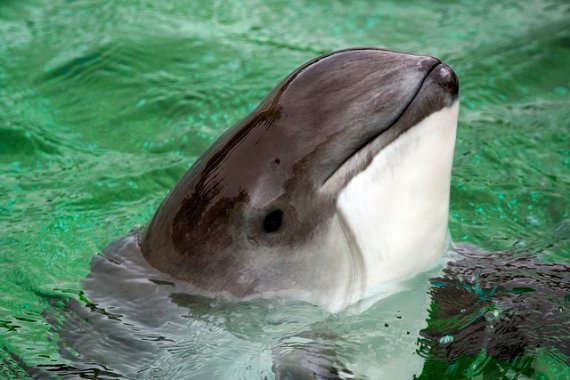Photo: Robert de Bruijn
Leopold’s results include strong signs that the porpoise followed the smelt to the Western Scheldt. His research shows, for instance, that almost half the diet of porpoises in the Western Scheldt consists of smelt. That is a much bigger share than at sea, where smelt only accounts for three percent and whiting and herring are more important. Leopold showed this by comparing the stomach contents of 212 porpoises that were washed up on the North Sea coast with 23 stranded porpoises from the Western Scheldt and two from the Scheldt river.
Oily fish such as smelt and herring are very important in the porpoise’s diet. Because porpoises are smaller than other members of the whale family, they have a relatively large surface area and lose heat more easily. Porpoises therefore eat up to ten percent of their bodyweight every day to survive. Adult animals can only keep this up by eating enough oily fish, which are rich in energy. Porpoises supplement this menu with small, non-oily fish like the goby but it would be impossible to get enough energy from eating these alone.
In the 1960s and 1970s they were as dead as a doornail. Toxic zones with almost nothing left alive in them
Mardik Leopold, sea researcher for Imares
For many years, Dutch rivers and inlets such as the Western Scheldt were too polluted for fish. ‘In the 1960s and 1970s they were as dead as a doornail,’ says Leopold. ‘Toxic zones with almost nothing left alive in them’. Thanks to better protection, the water is cleaner now and migratory fish are returning. Leopold therefore thinks it is ‘very positive’ that porpoises – and seals too – are being spotted again in the Scheldt and Eems rivers and even occasionally in the Rhine and Maas.
Even so, the rivers seem a less hospitable habitat for porpoises than the North Sea. In 2013, about 25 porpoises were spotted in the Scheldt, but most of them soon died. The two animals that Leopold examined turned out to have an empty stomach. They may not have been able to catch enough fish in the freshwater. However, it is still too early to draw firm conclusions, says Leopold. Obstacles such as sluices, ship’s propellers and the noise from ships could also be to blame.

